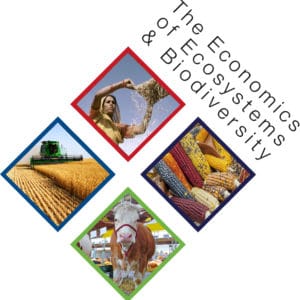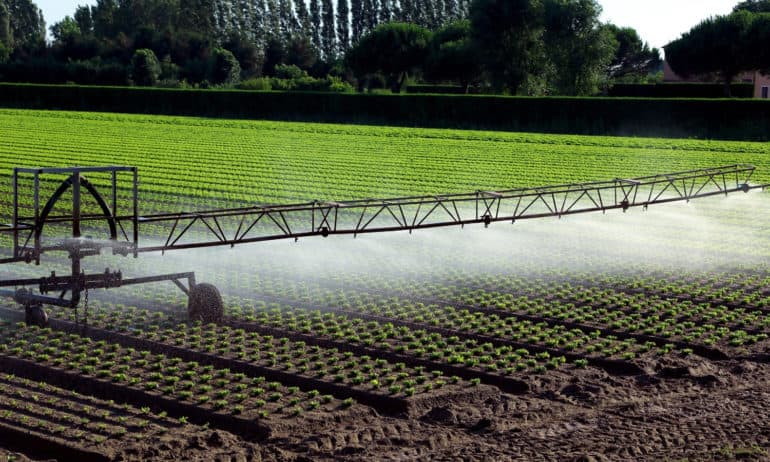Dr. Haripriya Gundimeda specializes in green accounting, environmental economics, and environmental policy. She is a chapter author of the new report from the Economics of Ecosystems and Biodiversity for Agriculture and Food (TEEBAgriFood). This report evaluates the world’s agriculture and food systems while considering a range of social, human, and environmental dimensions across the value chain.
Dr. Gundimeda is a chapter author for the Intergovernmental Science-Policy Platform on Biodiversity and Ecosystem Services (IPBES) work Programme II and serves as the President of the International Urban Biodiversity Network. She developed forest resource accounts for Himachal Pradesh and completed a study on payment for ecosystem services for Lake Armenia.
Food Tank sat down with Dr. Gundimeda to discuss the evaluation methods and tools outlined in the new TEEBAgriFood report.
Food Tank (FT): What is the most interesting thing you learned from working with TEEBAgriFood?
Haripriya Gunimeda (HG): Agriculture is taken for granted because people only see the food on their plate and do not understand food system externalities. TEEBAgriFood looks at the complexity of the agriculture system and values the input and output of ecosystem services. Small-scale farmers in countries like India depend on agriculture and therefore any prescribed policies impact their livelihood. There are holes in food security issues—it’s impossible to make food expensive and cheap at the same time. It’s a delicate balance that requires a different look, all of which are covered by the TEEBAgriFood report.
FT: What is the most significant unintended consequence of our current food system that policymakers, funders, and donors ignore?
HG: The food system moved from traditional to modern practices, and while that solves food security issues in the short term, it is not concerned with the long-term. For example, there was an excessive use of chemical fertilizers during the Green Revolution in India during the 1970s, which caused soil carbon depletion and hardening that led to an increase in the cost of farming. These issues are ignored by modern farming practices, which is a problem for the future and is contributing to food insecurity instead of solving it.
FT: What do you want people to know most about the TEEBAgriFood report?
HG: The TEEBAgriFood project uses a new approach to look at food. This is important because there are two groups of consumers, the ones who go to the organic food market and those who do not. The organic market will have higher prices, which excludes those who want to eat organic but can’t due to the high cost. However, cheap non-organic food is not actually cheap because of hidden costs. It may have an inexpensive price tag, but it is harmful to human and planetary health. On the other hand, markets make food that is grown using sustainable practices expensive due to lack of conducive price reducing policies. That’s where consumers need to understand the law of supply and demand. If there is a growth in the demand for organic foods, the number of subsidies and policies will increase for those practices, which will reduce the cost. If there is a demand for cheap food, however, then policymakers will continue to subsidize cheap food. The TEEBAgriFood report presents this trade-off well.
FT: What are the advantages of looking at our eco-agri-food system in its entirety—the systems approach—instead of deconstructing it to focus on specific issues?
HG: Silo thinking is the current method of thought in the eco-agri-food sector. It does not take into account that all sectors are interlinked. Many consumers tend not to worry about how farmers produce their food and how it arrives on their plate. Most policymakers are not concerned about the impacts of certain policies on agriculture and food security. Policymakers are encouraging bad agricultural policies and not realizing its impact on the health of consumers. That link, between policymakers and consumers, is missing. It is impossible to understand the true impact of a policy unless you understand the system from the beginning to the end, what externalities occur along the value chain, and how they impact development. Consumers need to find the appropriate motivation to change the behavior of policymakers to ensure the right policies are created. This is currently not happening, even at the global level. The eco-agri-food approach is advantageous because it allows an understanding of how changing one policy can impact the final well-being of the consumer. That’s why it is important to look at the impacts on the full system.
FT: What challenges did you face when developing a method to evaluate the impacts our food system has on the environment and human well-being?
HG: The health impacts of food are challenging. It can depend on factors such as your genetic makeup or your diet and exercise regime. This becomes even more evident at a local level. Most evaluation techniques used at a local level are not scalable. TEEBAgriFood prescribes evaluation methods but cannot be too prospective due to its data needs. Data is not uniform across all sectors and countries. Some countries collect better data, due to better data practices, while others have very limited data. It is essential to choose a suitable methodology without being too prospective. The methods differ as well, whether they’re cost or benefit based, which varies the valuations of the generated estimations. This is a complexity that TEEBAgriFood recognizes. The data needs are too great for some analysis, but it still must be done.
FT: How can policymakers use the TEEBAgriFood report?
HG: It is necessary for policymakers to recognize the whole range of externalities. Comparing different policies and their impacts on final development is essential for externality analysis. By giving policymakers choices, they can select one with minimal impacts on the health of the environment and citizens. Ultimately, food is something that we cannot do away with. It is important to get prices and policies right, even though it will be a challenge to make food affordable and safe.
FT: What is your hope for the report?
HG: The TEEBAgriFood report recognizes the demonstrated and captured values of ecosystem services in agriculture, food, and policymaking. The key highlighted messages of the report are being promoted extensively to policymakers. Recognizing externalities of food production and finding ways to minimize them while maximizing the valuation of the food system is the point of the report. This report is not only for policymakers, it’s to help citizens rethink how they value ecosystems.
Click HERE to download the TEEBAgriFood Report!
 The goal of TEEBAgriFood is to more comprehensively determine the costs, benefits, and dependencies of agriculture and food production. What makes some produce less expensive in most supermarkets is in part the use of cheap—often subsidized—fertilizers and pesticides, but that retail price does not take into account hidden costs like environmental damage from runoff or human impacts on health and livelihood. Conversely, these prices do not recognize the positive benefits created by more sustainable forms of agriculture. To ensure the sustainability of agriculture and food systems, an important step is to account for the side effects, or externalities, through market mechanisms. TEEBAgriFood is creating a framework for looking at all the impacts of the ‘eco-agri-food’ value chain, from farm to fork to disposal, including effects on livelihoods, the environment, and health. This can help farmers, decision makers, and businesses more explicitly look at the impacts of different practices and policies
The goal of TEEBAgriFood is to more comprehensively determine the costs, benefits, and dependencies of agriculture and food production. What makes some produce less expensive in most supermarkets is in part the use of cheap—often subsidized—fertilizers and pesticides, but that retail price does not take into account hidden costs like environmental damage from runoff or human impacts on health and livelihood. Conversely, these prices do not recognize the positive benefits created by more sustainable forms of agriculture. To ensure the sustainability of agriculture and food systems, an important step is to account for the side effects, or externalities, through market mechanisms. TEEBAgriFood is creating a framework for looking at all the impacts of the ‘eco-agri-food’ value chain, from farm to fork to disposal, including effects on livelihoods, the environment, and health. This can help farmers, decision makers, and businesses more explicitly look at the impacts of different practices and policies













